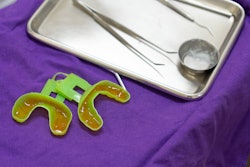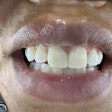
The use of second-molar (2M) sealants among U.S. adolescents is low, with two-thirds lacking them. Programs should focus on improving their delivery alongside first molar (1M) sealants, according to a study published in the Journal of the American Dental Association.
Furthermore, 2M sealant use was found to be linked to race and ethnicity, the authors wrote.
"To improve adolescent oral health, clinical and community programs should increase delivery of 2M sealants," wrote the authors, led by Dr. Shillpa Naavaal, MS, MPH, of the Virginia Commonwealth University School of Dentistry (JADA, August 8, 2024).
In the cross-sectional study, the research team analyzed publicly available data from the U.S. National Health and Nutrition Examination Survey (NHANES) across three two-year cycles from 2011 to 2016. Data were gathered through home interviews and dental exams conducted in mobile examination centers.
The study focused on adolescents ages 12 to 19 with complete sealant data (n = 3,636), with variables including race, ethnicity, and the presence of 1M sealants. Logistic regression models were used to identify factors associated with 2M sealants, they wrote.
The prevalence of 2M sealants was 34.6% (95% confidence interval [CI], 31.2% to 38.0%), while 1M sealants were more common at 43.7% (95% CI, 40.2% to 47.1%). There was a strong association between 2M and 1M sealant status (p < 0.001). Among adolescents with 2M sealants, 89% (95% CI, 86.1% to 92.0%) also had 1M sealants compared to just 19.6% (95% CI, 17.1% to 22.2%) among those without 2M sealants, according to the results.
Furthermore, non-Hispanic white adolescents had the highest prevalence of 2M sealants at 38.6% (95% CI, 34.3% to 42.9%), while non-Hispanic Black adolescents had the lowest at 26.1% (95% CI, 21.0% to 31.2%). Adjusted logistic regression models showed that non-Hispanic Black adolescents (odds ratio [OR]), 0.57; 95% CI, 0.42 to 0.77) and non-Hispanic Asian (OR, 0.67; 95% CI, 0.48 to 0.93) had significantly lower odds of having 2M sealants compared to non-Hispanic white adolescents.
In the adjusted models, race and ethnicity were initially strongly associated with 2M sealant presence, but this association disappeared when 1M sealant status was considered. The presence of 1M sealants was the most significant predictor of having 2M sealants, with an OR of 0.03 (95% CI, 0.02 to 0.04), according to the results.
However, the study had limitations. The study identified associations but not causality, because the survey data used were cross-sectional, the authors wrote.
"Study findings highlight the need to evaluate adolescent sealant delivery programs to improve the uptake of 2M sealants," they concluded.




















